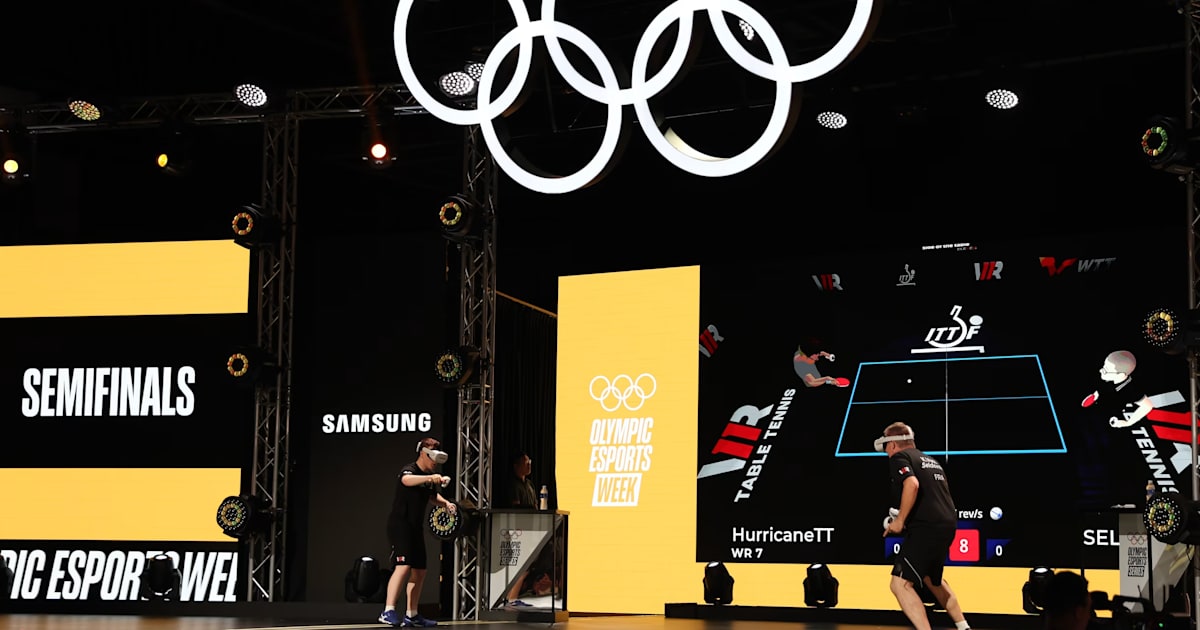Sports
NCAA’s $2.7 Billion Settlement Shakes Up College Sports: Olympic Sports Could Be In Jeopardy

EUGENE, OR – JUNE 11: Eliud Kipsang of the Alabama Crimson Tide and Yared Neguse of the Notre Dame … [+]
The NCAA’s controversial agreement to use both current and future conference revenues to pay athletes is starting to settle in. Attorneys for the plaintiffs in House v NCAA offered the Association and its member schools a one-time chance to settle the case and spread the damages over the next decade. Originally scheduled to go to trial in 2025, if the NCAA lost the case, the potential damages were rumored to be near $20 billion, likely bankrupting the organization.
The NCAA took the deal.
High-profile athletes and teams will receive long-awaited payments from the college sports industry settlement, especially men’s basketball and football players who generated the majority of the revenues. It is certainly appropriate for them to share in the wealth.
Metro Atlantic Athletic Conference (MAAC) commissioner Travis Tellitocci explained, “we support the NCAA moving forward with a settlement because the alternative of the ongoing litigation and the end result of what could have been a lengthy trial really could have been catastrophic for college athletics.” Despite his relief, the MAAC stands to lose $2.8 million annually over the next decade from lowered NCAA revenues.
Since the agreement was announced a week ago, there has been very little public discussion around how conferences like the MAAC will adjust to the loss of future revenues. The NCAA revenues pay for a large portion of the conference championships expenses in each sport. How will they fund these events if there is less money coming in from the NCAA? Without conference championships, it is not easy to qualify for the NCAA tournament. Over the years, hundreds of Olympic level athletes have emerged from a range of conferences.
According to Front Office Sports, in an attempt to provide an alternative to the proposed settlement, 21 conference commissioners signed a letter protesting their school’s inclusion in having to pay a portion of the $2.7 billion in damages. From FOS: “The majority of non-power conference administrators learned most of the terms of the deal only after it was leaked to Yahoo! Sports. They then went on the offensive: the Big East’s Val Ackerman suggested an alternative payment model that she considered more fair to non-power conferences,” reporter Amanda Christovich wrote. “NCAA president Charlie Baker previously held a briefing with the rest of D-I, but barely explained any of the settlement’s actual terms, a source told FOS.”
Their request received no response from the NCAA prior to the announcement.
Which conferences are facing financial challenges?
The Big Ten Conference and the Southeastern Conference are not included in the above chart for two primary reasons: the clear revenue advantages that the SEC and Big Ten conferences hold in the new College Football Playoff payout structure; and the millions in media revenues both receive from their conference-wide television networks. Notre Dame has an exclusive television contract with NBC paying them $22 million a year.
Two schools facing different paths
31 May 2009: Georgia pitcher Sarah McCloud (5) during the NCAA Women’s College World Series as the … [+]
The University of Georgia is taking the settlement in stride. With an annual athletics budget of $210 million, they have a lot of resources to draw from. Additionally, UGA treasurer Ryan Nesbit told the trustees “the athletic association currently has $49 million of uncommitted funds in its reserves”.
Georgia AD Josh Brooks told The Athletic: “You have to pull every lever,” Brooks said. “So just like you with your own personal finances, we’re going to try to find ways to grow revenue. Whether it’s through our multimedia rights partner, whether it’s future revenue gains through TV contracts with the CFP, I think looking at opportunities with ticket prices are a way. You can’t always think the answer to everything is to generate more revenue. You’ve got to look at yourself and say, ‘Where can we be more efficient while still providing a first-class experience for our student-athletes?’ So maybe cuts to how the staff operates, as well.”
Brooks also indicated that he believes the facility arms race will dissipate as departments will be focused on redirecting revenues to athletes.
The Atlanta Journal-Constitution reported, “there already have been discussions of invoking scholarship limits (at Georgia). Schools with bottom lines far below Georgia have said they might have to eliminate some non-revenue sports”. Going forward, athletes in the SEC and other Power conferences will be permitted to offer up to 22% of average future revenues as revenue shares. (The exact distribution model has yet to be determined.)
ATLANTA – JULY 17: Georgia State University Signage outside the Georgia State University Sports … [+]
Georgia State University, located not far from Athens, has far fewer options. Athletics Director Charlie Cobb told the Atlanta Journal-Constitution “I don’t think anybody really knows what the immediate economic reality is for most mid-major programs,” Georgia State athletic director Charlie Cobb said. “You’re looking at anywhere from $400,000 to half a million dollars in decreased revenue, on top of inflationary expense increases. At the end of the day you’ve got to replace the revenue with a new source that’s yet to be identified or cut services. That’s the short-term reality because I think it’s an evolution as to where we’re going and what we’re doing.” Georgia State has an annual athletics budget of $38.84 million.
Georgia State offers 15 sports, most of them Olympic-sponsored sports. The Athletic Association just announced the new construction of a $15.85 million baseball stadium, “funded by GSU Athletic Association gifts and reserves and Foundation funds and gifts”.
For years, the Sun Belt Conference, of which Georgia State is a member, has been working on growing their television revenues. Now, and likely for the next decade, the conference will lose nearly all of that revenue growth.
Like many, Cobb knows his days of finding new revenues to balance his current budget just got harder. “I think a lot of school presidents, boards, significant donors, athletic directors on down the line who are going to be asking, ‘Who are we and what are we going to be about? And trying to answer that with a smaller, more constricted revenue pool to pay for all the things that are going to come out of whatever this new modern world of NCAA athletics looks like.”
This is a time of tremendous recalibration. Division I status (especially if it is tied to membership in the Football Bowl Subdivision) used to mean more revenues to offset the increased spending, along with a new set of peer institutions. Now, schools are beginning to consider just how far they can retrench their athletics programs in order to remain a member of Division I.
The stakes just got a whole lot higher. There are a hundred other conversations similar to those at Georgia and Georgia State happening across the country. Many will need to seriously examine if they have the financial resources available to continue to be competitive in Division I. If they don’t, the decisions become even harder.









